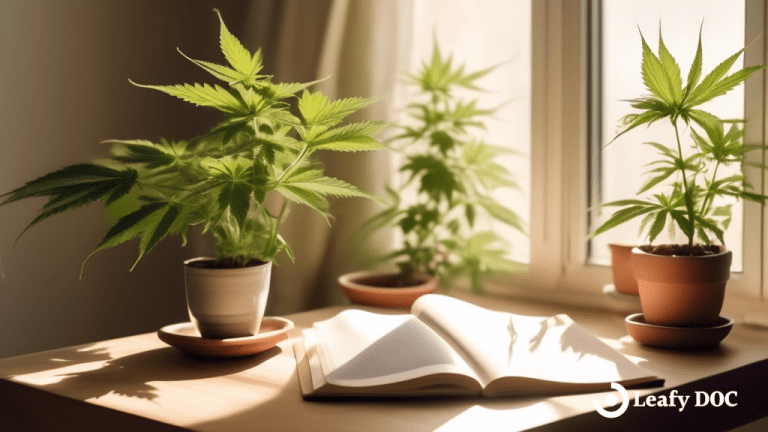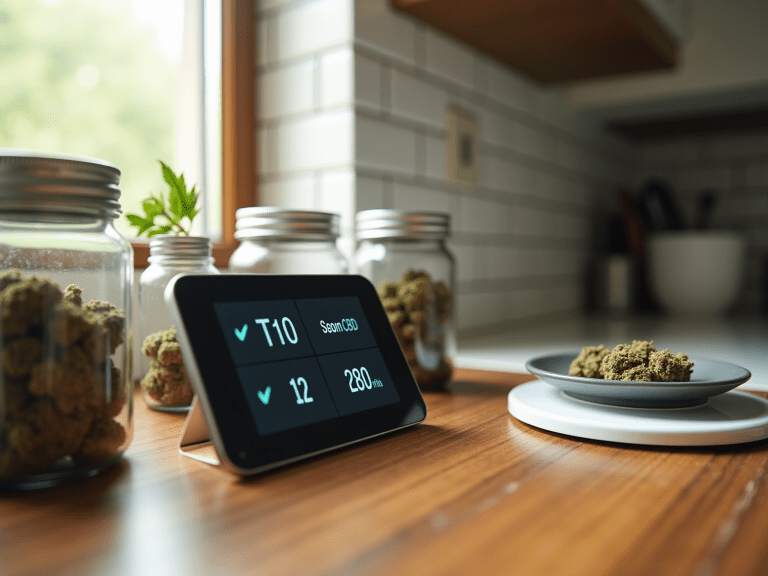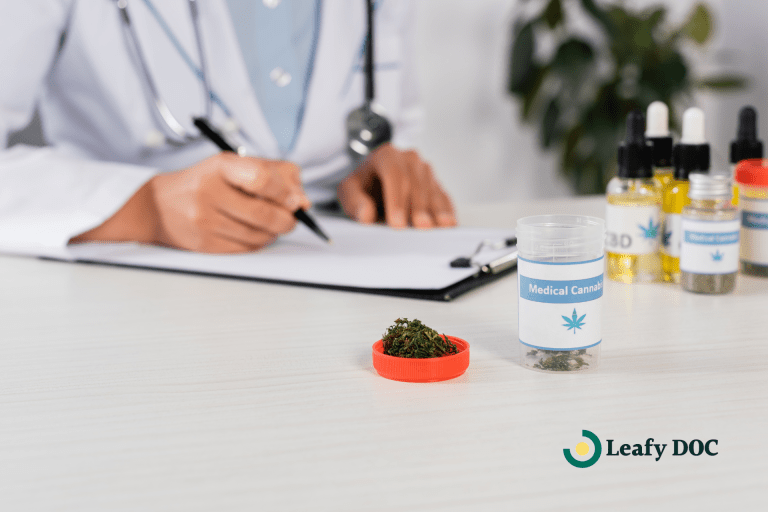How Many Grams In A Pound Of Weed
by Ayesha Aziz · February 24, 2024
Unveiling the Mystery: How Many Grams in a Pound of Weed? Find out the surprising answer and satisfy your curiosity now! Click here to uncover the truth and feed your knowledge on this topic.
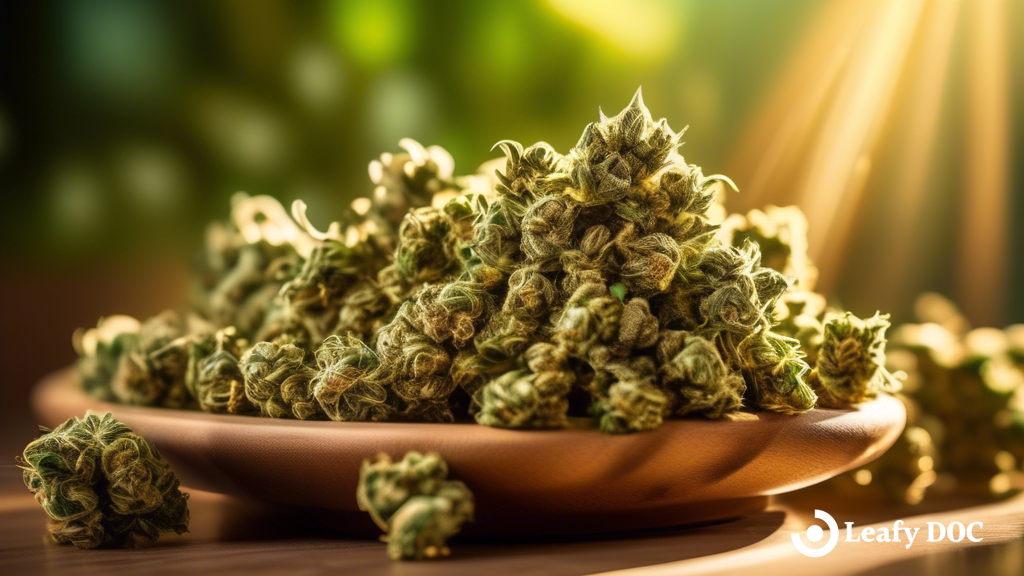
Are you curious about the weight of weed and how it is measured? Well, you’ve come to the right place! In this article, we will dive into the world of weed measurements and specifically answer the question of how many grams are in a pound of weed.
Understanding these measurements is essential, whether you’re a cannabis enthusiast, a medical marijuana patient, or simply someone who wants to be knowledgeable about this topic. So, sit back, relax, and let’s explore the fascinating world of weed measurements together!
Now, you might be wondering why it’s important to know how many grams are in a pound of weed. Well, having a clear understanding of these conversions can help you make informed decisions when buying or selling weed.
Whether you’re purchasing weed for personal use or working in the cannabis industry, knowing the weight of the product is crucial. This knowledge ensures you’re getting the right amount for your money and helps you avoid any confusion or misunderstandings. So, let’s delve into the measurement conversion and explore how many grams are in a pound of weed!
Understanding the Measurement Conversion
So, you’re probably wondering how many grams are in a pound of weed, right? Well, let me break it down for you.
What Is a Gram?
A gram is the most basic unit of weight in the metric system, commonly used for small quantities, especially in cannabis. It’s the smallest amount of weed typically sold at dispensaries and a popular option for anyone trying out a new strain without making a big commitment.
Visually, a gram of weed is usually about the size of a walnut, depending on the strain and bud density. Price-wise, it typically ranges from $10 to $20, though this can vary based on location, quality, and availability.
There are 1,000 grams in a kilogram, and for cannabis conversions, it’s useful to know that one ounce equals approximately 28.35 grams. This helps bridge the gap between metric and imperial measurements in cannabis purchases.
When it comes to measurement conversions, it’s important to understand the basic units of measurement. In the case of weed, the two main units we’re dealing with are grams and pounds.
What Is a Pound?
A pound is a unit of weight in the imperial system, equal to 16 ounces. It’s commonly used in the United States, including in cannabis measurement.
In cannabis terms, a pound breaks down into 453.6 grams. This larger unit is typically used for bulk purchases or wholesale transactions.
Understanding Measurement Systems
To understand the difference between pounds and grams, know they belong to distinct measurement systems.
In cannabis, weight is often expressed using both the metric and imperial systems. Pounds and ounces come from the avoirdupois system, which is commonly used in the United States, while grams and kilograms are part of the metric system, used globally.
This blend can be confusing at first—especially when cannabis products are labeled in grams but sold in ounces or pounds. Understanding how these systems overlap helps you make sense of dispensary menus, legal limits, and product pricing across regions.
Grams and Kilograms
In the metric system, grams are the foundational unit. They make up kilograms, with 1,000 grams in a single kilogram.
Understanding this conversion can be useful, especially if you’re in a position where you need to serve others. Whether you’re a budtender helping customers at a dispensary or a friend looking to share some weed with your pals, knowing how many grams are in a pound can come in handy. It allows you to accurately measure and distribute the right amount, ensuring everyone gets their fair share.
Happy serving!
Grams to Pounds Conversion Formula
To easily convert grams to pounds, you just need to remember the simple conversion formula. One pound is equal to 453.592 grams. So, to convert grams to pounds, you divide the number of grams by 453.592. Let’s break it down further with an easy-to-understand table:
| Grams | Pounds |
|---|---|
| 1 | 0.0022 |
| 100 | 0.2205 |
| 500 | 1.1023 |
| 1000 | 2.2046 |
| 2000 | 4.4092 |
By using this table, you can easily convert any number of grams to pounds. For example, if you have 500 grams of weed, you can divide it by 453.592 to get approximately 1.1023 pounds. This conversion formula will help you quickly and accurately convert grams to pounds, making it easier for you to understand the measurement of your weed.
Don’t forget, that serving others is important, and by understanding the measurement conversion, you can serve others better. Whether you’re a budtender helping customers find the right amount of weed or someone sharing your stash with friends, knowing how to convert grams to pounds will ensure everyone gets the right portion. So, keep this conversion formula in mind and serve others with accuracy and precision.
How Grams Break Down in a Pound of Weed
A pound of cannabis contains approximately 453.6 grams, but it’s often easier to think of it in familiar portions:
- 16 ounces (each ounce equals about 28.35 grams)
- 32 half-ounces (each half is around 14.17 grams)
- 64 quarters (each quarter weighs about 7.09 grams)
- 128 eighths (each eighth comes to roughly 3.54 grams)
What About Half a Pound?
A half pound of weed equals 226.8 grams. While it doesn’t have a well-known nickname like “zip” or “quad,” it’s a straightforward way to buy or divide cannabis. Interestingly, this is also close to the average yield of a single outdoor-grown cannabis plant, depending on genetics and growing conditions.
Whether you’re splitting with a friend or buying in bulk, knowing how to break down these measurements helps you make smart, accurate choices.
How Many Joints Can You Roll from a Quarter Pound of Weed?
A quarter pound of weed equals roughly 113 grams. How many joints that gives you depends on how much cannabis you use per joint:
- Standard Joint (0.5 grams each): You can roll around 226 joints.
- Light Joints (0.25 grams each): You’ll get up to 452 joints.
- Large Joints (1 gram each): Expect about 113 joints.
These are estimates based on average rolling sizes. Whether you’re rolling for personal use or planning for a group, knowing how far a quarter pound of cannabis can go helps you manage your stash effectively.
What Does a Quarter Pound of Weed Look Like?
A quarter pound of weed—often called a “QP”—equals four ounces or about 113 grams. That’s a sizable amount, especially compared to everyday personal-use purchases.
To visualize it, imagine a standard sandwich bag packed full with dense cannabis buds. Depending on the moisture and density, it might look bigger or smaller:
- Dry, fluffy buds will appear bulkier
- Sticky, dense buds tend to look more compact
Either way, it’s not something you casually carry in your pocket. A QP is commonly bought by bulk buyers, dispensary staff, or seasoned users sharing with friends. If you’ve ever seen a large stash pulled out at a group session, it was probably around this size.
Understanding what a quarter pound looks like helps you better gauge quantity when splitting purchases or planning for long-term storage.
How Many Brownies Can You Make from a Quarter Pound of Weed?
A quarter pound of weed is about 113 grams. Since most edible recipes use around 28 grams (or one ounce) per batch, you can make four standard batches of brownies. If each batch yields 24 brownies, that adds up to about 96 brownies total.
Of course, the strength of your brownies depends on the THC content of the cannabis you use. To keep things safe and consistent, consider using a THC calculator to estimate potency per serving. Edibles take longer to kick in and can last several hours, so start small and give it time before eating more.
Calculating the Weight of Weed in Pounds
If you’re looking to determine the weight of a pound of marijuana, there’s a simple calculation you can use. A pound is equivalent to 16 ounces, and each ounce is equivalent to 28.35 grams.
So to calculate the weight of a pound of weed in grams, you would multiply 16 by 28.35. This gives you a total of 453.6 grams in a pound of marijuana.
Now, you might be wondering why you would need to know the weight of a pound of weed in grams. Well, understanding the weight can be important for a variety of reasons. For example, if you’re a dispensary owner, you may need to accurately measure and package your products.
Knowing the weight in grams can help ensure you’re providing your customers with the correct amount. Additionally, if you’re a consumer, understanding the weight can help you budget and plan your purchases more effectively.
So whether you’re in the business of selling or buying marijuana, knowing the weight of a pound in grams can be a valuable piece of information.
The Problem with Rounding in Cannabis Measurements
Precision matters in cannabis transactions. Even small rounding errors can lead to noticeable discrepancies in weight—and that means customers may not get what they paid for.
Take this example: two pounds of cannabis should weigh exactly 907.184 grams. If someone receives only 905 grams, that’s a shortage of over 2 grams. While it might seem minor, over time or at scale, those missing grams add up—especially when the product is sold at premium prices.
Even being shorted by 0.05 grams chips away at fairness and trust. Every fraction counts, not just for quantity, but also for maintaining consistency and product quality.
That’s why accurate measurement is crucial in the cannabis industry. Rounding might be easier, but it risks shortchanging consumers and reducing the overall experience.
Common Weed Measurements in Grams and Pounds
Did you know how much of that green stuff you can get in a single pound? It’s quite a bit! When it comes to measuring weed, there are common measurements used in both grams and pounds. Let’s take a look at a table that shows some of these measurements:
| Grams | Pounds |
|---|---|
| 1 | 0.0022 |
| 3.5 | 0.0077 |
| 7 | 0.0154 |
| 28 | 0.0617 |
As you can see, even just one gram of weed is a small amount, but when you multiply that by 454 (the number of grams in a pound), you end up with quite a substantial quantity. For example, 28 grams, also known as an ounce, is equivalent to 0.0617 pounds. This means that a pound of weed is roughly equivalent to 16 ounces. So next time you come across a pound of weed, you’ll have a better idea of just how much you’re dealing with.
Breaking Down a Pound into Usable Quantities
A pound of cannabis contains approximately 453.6 grams, but it helps to think of it in everyday terms. Here’s a quick breakdown:
- Ounces: 16 one-ounce packages (28.35 grams each), ideal for bulk buyers.
- Halves: 32 half-ounce portions (14.17 grams each), a great middle-ground quantity.
- Quarters: 64 quarter-ounce portions (7.09 grams each), perfect for casual but regular users.
- Eighths: 128 eighths (3.54 grams each), one of the most popular purchase sizes.
- Quarter Pound (QP): Equal to 113.4 grams or 4 ounces, a QP is commonly used for making cannabis extracts or concentrates due to the larger flower quantity required.
Knowing these divisions can help you better navigate cannabis purchases, whether you’re buying small amounts or stocking up.
Keep in mind, that it’s important to always exercise caution and abide by the laws in your area when it comes to purchasing and possessing weed. If you’re unsure about the legality or the proper measurements, it’s always best to consult with a trusted source or professional who can provide you with accurate information. Stay safe and enjoy responsibly!
How Much THC Is in a Quarter Pound of Cannabis?
A quarter pound of cannabis weighs about 113 grams — but how much THC does that actually give you?
It depends on the THC percentage of your strain. Most cannabis flower today falls between 15% and 25% THC. That means every gram contains 150–250 milligrams of THC.
Here’s a quick breakdown:
- At 15% THC: 113 × 0.15 = 16.95 grams of THC
- At 20% THC: 113 × 0.20 = 22.6 grams of THC
- At 25% THC: 113 × 0.25 = 28.25 grams of THC
These numbers are estimates, of course—actual potency can vary from batch to batch. If you’re buying from a licensed dispensary, you’ll typically find the THC content printed on the label. For more accuracy, consult lab results or ask a budtender for strain-specific testing info.
Knowing your total THC content helps with portion control, cost planning, and choosing the right strain for your needs—whether for relaxation, creativity, or symptom relief.
Common Quantities of Cannabis Purchased at a Dispensary
When stepping into a dispensary, most customers are usually interested in buying cannabis in smaller, more manageable quantities. In many states, including Washington, the legal limit for cannabis flower purchases is 28 grams (1 ounce) per visit. Regulations vary, so check your local laws before making a purchase.
Dispensaries typically offer a range of purchase options, but the minimum amount available can differ based on local regulations and store policy. While some states allow you to purchase as little as 1 gram, others—like Illinois—often set the minimum at an eighth (3.5 grams), even for shake or pre-ground cannabis. This standardization helps both the consumer and the dispensary streamline transactions and comply with state rules.
Here’s a breakdown of common units:
- Gram (1g): Great for beginners or anyone trying out a new strain.
- Eighth (3.5g): A popular choice—enough for a few sessions without going overboard.
- Quarter (7g): Ideal for someone who knows what they like and wants a bit more.
- Half-Ounce (14g): Works well for regular users who want to stock up.
- Ounce (28g): Comprised of 28 grams, buying an ounce can be more economical for those who have a high level of consumption or wish to ensure they have a ready supply.
To give you an idea of how this adds up:
A pound equals 16 ounces, or 128 eighths, 64 quarters, or 32 half-ounces. This helps you visualize just how much product is in a full pound compared to everyday dispensary buys.
State Laws and Purchase Limits
Every state determines the specific quantities you’re legally allowed to purchase and possess. There’s no one-size-fits-all rule, so it’s essential to be familiar with the cannabis laws where you live or travel. In some places, dispensaries may only sell set increments (like the eighth), while others permit more flexibility. Always check your state and local guidelines before making a purchase to stay compliant with the law.
How Quantity Affects Cannabis Pricing
Buying cannabis in larger amounts usually leads to a lower price per gram. Dispensaries often offer tiered pricing or bulk discounts, which means stocking up can save you money in the long run.
To put it in perspective, the U.S. Cannabis Spot Index reports that the average price per pound in 2024 is around $1,045. That breaks down to roughly $2.30 per gram. So if you’re buying a quarter pound—about 113 grams—you can expect to pay close to $260, depending on where you shop.
Cannabis prices tend to spike during the holidays when demand is high, but they often dip in the early months of the year. While there’s been a slight post-holiday drop in 2024, overall prices are still higher than last year—especially for indoor and greenhouse flower. Outdoor-grown cannabis, meanwhile, has stayed relatively stable.
If you’re budgeting or buying in bulk, keeping an eye on price trends and strain types can help you get better value without compromising on quality.
Consuming Edibles Made from a Quarter Pound of Weed
A quarter pound of cannabis (around 113 grams) can make a large quantity of edibles—far more than typical home recipes require. If you’re planning to cook with this much weed, consider the following:
- Potency matters: Most edible recipes use 1 ounce (28 grams) or less. With a quarter pound, you could make up to four standard batches, increasing the potential strength significantly.
- Start small, go slow: Edibles take longer to take effect—sometimes up to two hours—and often hit harder than smoking or vaping. Start with a small portion and wait before consuming more.
- Calculate dosage carefully: THC levels vary by strain. Use a dosage calculator to estimate how much THC ends up in each serving based on your weed’s potency.
- Ensure even distribution: Mix your batter thoroughly to keep the THC content consistent across all servings.
- Label and store responsibly: Keep edibles clearly marked and out of reach from children, pets, or anyone unaware they contain cannabis.
By managing your portions and understanding potency, you can enjoy a safer and more predictable edible experience when using a quarter pound of cannabis.
How to Calculate THC Content in a Quarter Pound of Weed
Want to know how much THC is in a quarter pound of cannabis? You’ll need two things: the weight of your weed and its THC percentage.
A quarter pound equals 113 grams. To estimate the total THC content, multiply the total weight by the THC percentage (written as a decimal).
For example:
- If your weed has 20% THC:
- 113 grams × 0.20 = 22.6 grams of THC total
This is a rough estimate, since THC levels can vary by strain, cultivation method, and freshness. For more accuracy—especially for medical use—look for lab-tested products or ask your dispensary for certified THC content from labs like SC Labs or Cannalysis.
Knowing how to calculate total THC helps you understand the strength of your product and better manage your dosage for recreational or medical use.
Cannabis Price Trends: What’s Happening in 2024?
Cannabis prices tend to dip after the holiday season, and that pattern held true in early 2024. Following a late-2023 spike, average costs dropped slightly in the first few months of the year.
Still, when you look at the bigger picture, prices for premium cannabis—especially indoor and greenhouse-grown flower—have been on the rise compared to last year. These products cost more due to higher production quality and continued demand. Meanwhile, prices for outdoor-grown weed have stayed relatively stable.
If you’re budgeting for a quarter pound of weed, expect some fluctuation depending on quality and season. Watching these trends can help you time your purchases for the best deals, especially if you’re after top-shelf strains.
What Does a Quarter Pound of Weed Cost in 2024?
In 2024, the average cost of a quarter pound of cannabis is around $260, based on a per-pound price of $1,045 according to the U.S. Cannabis Spot Index. That breaks down to about $2.30 per gram for roughly 113 grams.
Prices usually dip early in the year after a holiday surge, and that trend continues in 2024. However, wholesale costs have increased slightly from last year, especially for indoor and greenhouse-grown flowers. Outdoor weed prices have stayed relatively steady.
Keep in mind that retail prices can vary by location, strain quality, and dispensary deals. For the latest local prices, please call your preferred dispensary.
Legal Implications of Ignorance in Cannabis Conversion Rates
Understanding how to convert grams to pounds isn’t just about accurate purchasing—it’s also key to staying compliant with the law. Most states have strict limits on how much cannabis you can possess, and misjudging conversions can lead to unintentional infractions.
Over-Possession Risks
If you don’t understand how much cannabis you’re carrying in grams, you could easily exceed legal possession limits without realizing it. Even a small miscalculation could result in fines or more serious penalties, depending on your local laws.
How to Stay Compliant
- Know Your Limits: Check your state or local possession laws regularly.
- Measure Precisely: Use a digital scale to verify weight before transport or purchase.
- Use Apps or Charts: Quick reference tools can help avoid mistakes in conversions.
A simple error in math shouldn’t lead to legal trouble. Being informed about cannabis weights can help you stay on the right side of the law.
How Quantity Affects Cannabis Pricing
Buying cannabis in larger amounts usually results in a lower price per gram. Dispensaries often use tiered pricing or bulk discounts, which means the more you buy, the better value you get. This is because larger quantities reduce packaging and handling costs, and those savings are often passed on to the customer.
Once you’ve picked a strain, the size of your purchase can significantly impact your total cost. Here’s a breakdown of common quantities and what they mean:
- Eighth (3.5g): A popular amount for casual use or trying out new strains.
- Quarter (7g): Also called a quad, this is ideal for regular users who want more than a sampler but less than a bulk buy.
- Half-Ounce (14g): A solid middle-ground for consistent consumers.
- Ounce (28g): The most economical per gram, often preferred by frequent users stocking up.
Note: The actual visual size of a quarter or any portion can vary depending on the strain’s density and moisture, but the weight remains consistent. Pricing for a quarter or any size will also depend on quality and location.
Understanding the Half-Ounce (aka Half-O, Halfie, or Half a Zip)
A half-ounce of weed equals 14 grams and is often referred to as a half-O, halfie, or half a zip in casual conversation. It’s a common quantity for regular cannabis users, offering enough product to last a while without sacrificing freshness.
This amount can yield plenty of joints, bowls, or blunts and is ideal for those who want a solid stash without committing to a full ounce. Plus, buying a half-ounce often comes with better per-gram pricing thanks to dispensary bulk discounts.
Once you’ve chosen a strain, the amount you buy can significantly affect your total cost. Larger quantities help dispensaries save on packaging and handling, and those savings are often passed on to the customer.
If you’re planning ahead or budgeting long-term, buying in bulk can be more cost-effective — even if it costs a bit more upfront.
Legal Implications of Ignorance in Cannabis Conversion Rates
Understanding how to convert grams to pounds isn’t just about accurate purchasing—it’s also key to staying compliant with the law. Most states have strict limits on how much cannabis you can possess, and misjudging conversions can lead to unintentional infractions.
Over-Possession Risks
If you don’t understand how much cannabis you’re carrying in grams, you could easily exceed legal possession limits without realizing it. Even a small miscalculation could result in fines or more serious penalties, depending on your local laws.
How to Stay Compliant
- Know Your Limits: Check your state or local possession laws regularly.
- Measure Precisely: Use a digital scale to verify weight before transport or purchase.
- Use Apps or Charts: Quick reference tools can help avoid mistakes in conversions.
A simple error in math shouldn’t lead to legal trouble. Being informed about cannabis weights can help you stay on the right side of the law.
Can You Legally Buy a Quarter Pound of Cannabis with a Medical Marijuana Card?
Whether or not you can legally purchase a quarter pound of cannabis with a medical marijuana card depends entirely on your state’s laws. A quarter pound equals 4 ounces, or about 113 grams, well above most recreational purchase limits. However, some states offer expanded allowances for medical patients.
For example:
- California allows medical users to possess up to 8 ounces.
- Oregon permits possession of up to 24 ounces for registered patients.
- Arizona restricts medical users to 2.5 ounces every two weeks.
These limits vary widely, and not every state grants higher quantities for medical use. In states where cannabis is still illegal for any use—such as Idaho or Texas—possession of any amount, including a quarter pound, remains prohibited.
A few quick tips to stay compliant:
- Check your local laws regularly—rules can change quickly.
- Don’t assume your medical marijuana card gives you unlimited purchasing power.
- Ask dispensary staff for guidance or consult state websites or trusted resources like NORML for updates.
If you require larger quantities for medical use, it’s best to speak directly with your healthcare provider and a licensed dispensary. Staying informed helps you avoid legal risks while accessing the relief you need.
Is It Legal to Buy a Quarter Pound of Weed in 2024?
Whether it’s legal to buy a quarter pound of weed in 2024 depends entirely on your state’s cannabis laws. A quarter pound equals about 113 grams—well beyond the standard purchase limits for recreational users in most states.
For instance, in states like California and Colorado, adults can typically only purchase or possess up to 1 ounce (28 grams) at a time for recreational use. That means buying a full quarter pound in one go isn’t allowed unless you qualify under a medical marijuana program with higher possession limits.
In contrast, medical marijuana cardholders in some states may be permitted to buy and possess larger amounts. The rules vary:
- Some states allow higher purchase thresholds for medical patients.
- A few recognize out-of-state medical cards, which can help when traveling.
- Others, like Idaho and Texas, still prohibit cannabis entirely—whether medical or recreational.
The bottom line? Always double-check your local cannabis regulations before making a large purchase. Exceeding your state’s legal limit, even unintentionally, could result in fines or legal consequences. If you’re unsure whether you qualify for higher purchase amounts through a medical marijuana card, consult official resources or your state’s cannabis control board for accurate, up-to-date information.
Tips for Accurate Weed Measurement
When it comes to accurately measuring weed, it’s important to follow these tips.
First, make sure you have a reliable scale that is calibrated properly. This will ensure that you are getting accurate measurements every time.
Additionally, it’s a good idea to use a tray or container to hold the weed while you weigh it. This will prevent any loss or spillage, ensuring that you are getting an accurate measurement.
Another tip for accurate weed measurement is to use a digital scale rather than a manual one. Digital scales are more precise and can provide measurements down to the decimal point. This is important when measuring small amounts of weed, as even a slight variation can make a difference.
In addition to using a reliable scale and container, it’s important to handle the weed carefully when measuring. Avoid touching the weed with your hands as much as possible, as this can transfer oils and moisture, affecting the weight. Instead, use a pair of tweezers or a clean utensil to handle the weed.
Following these tips will ensure that you are accurately measuring your weed, whether you are using grams or pounds. By taking the time to measure carefully, you can ensure that you’re getting the desired amount every time.
How Weed Amount Affects Edible Potency
The amount of weed used in edibles has a direct impact on how potent your final product turns out. More cannabis means more THC per serving—especially if you don’t adjust the number of portions in your recipe.
For example, if you use a quarter pound of weed (about 113 grams) in one batch instead of the usual ounce (28 grams), your edibles will be significantly stronger unless you divide them into more servings. That’s why portioning is key.
To keep potency consistent and safe:
- Use a trusted recipe
- Portion out servings evenly
- Try a THC dosage calculator to estimate potency per piece
Edibles take longer to kick in—up to two hours—and can last much longer than smoking or vaping. Start with a small piece, wait, and only increase your dose if needed. And don’t forget: clearly label your edibles and store them safely to avoid confusion or accidental overconsumption.
Frequently Asked Questions
How do different strains of weed affect the weight of a pound?
Different strains of weed do not affect the weight of a pound. The weight of a pound remains the same regardless of the strain. However, different strains can have varying levels of potency and effects on the body.
Are there any legal limitations on the amount of weed one can possess in grams or pounds?
In terms of legal limitations, the amount of weed one can possess varies depending on the jurisdiction. It is important to familiarize yourself with local laws and regulations to ensure compliance and avoid any legal trouble.
How does the weight of weed affect its potency?
When it comes to the weight of weed, potency isn’t directly affected. However, the amount you consume can impact the high. Remember to always serve yourself responsibly and in moderation.
Can the weight of a weed vary depending on its moisture content?
Yes, the weight of weed can vary depending on its moisture content. When weed is moist, it weighs more due to the water content. Properly dried weed will have less moisture and therefore weigh less.
Are there any special considerations when measuring the weight of weed for medical or recreational use?
When measuring weed for medical or recreational use, it’s important to consider factors like the strain’s potency and the desired effects. Serving others in this context means finding the right dose for their needs.
Last Updated: July 2, 2025
Get Approved for Your Medical Marijuana Card in Minutes!

Get Your Medical Card
Connect with a licensed physician online in minutes
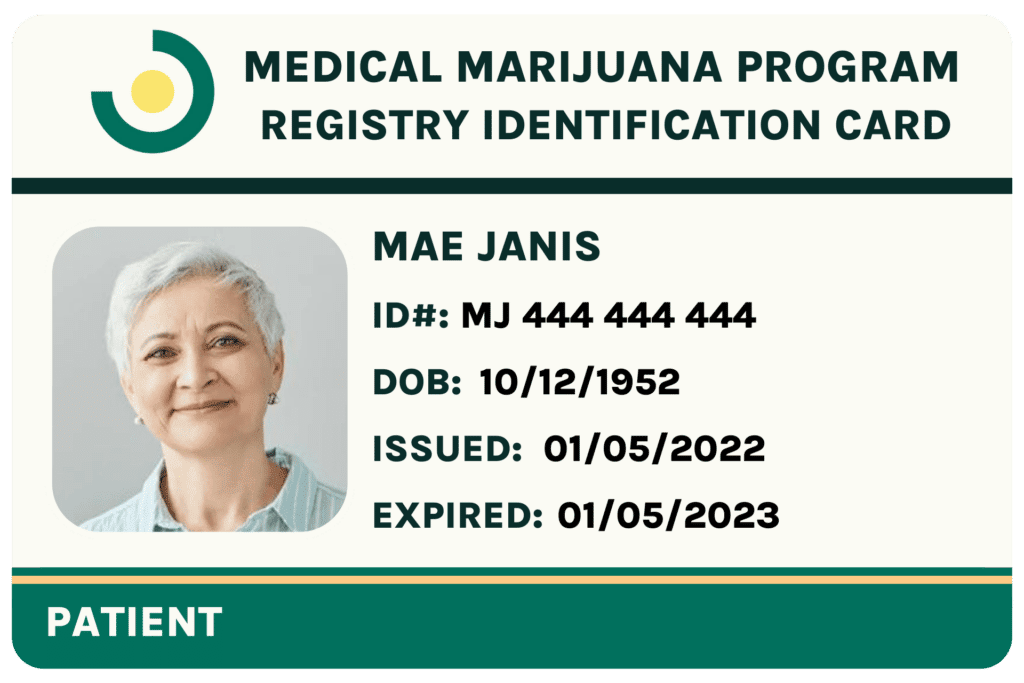
Like This Article?
Share with your friends
Table of Contents
Keep Reading
-
Effective Tips For Using Cannabis In Your Recovery Routine
Enhance your recovery journey with these effective cannabis tips! Discover the secrets to incorporating cannabis into your routine for optimal healing. Click here to unlock the power of cannabis in your recovery now!
-
How to Use a Weed Calculator: A Step-by-Step Guide for Accurate Dosing
Discover how to effectively use a weed calculator for precise dosing and enhanced cannabis experiences.
-
How to Get a Medical Marijuana Card Online: A Complete Guide to Certification
Learn how to get a medical marijuana card online with this step-by-step guide. Discover the certification process, qualifying conditions, renewal steps, and how LeafyDOC simplifies access through secure telehealth.

